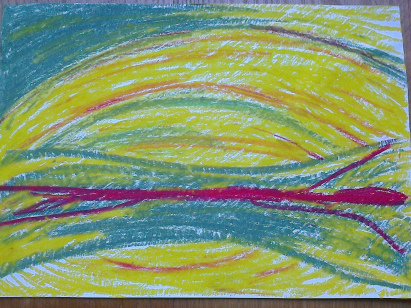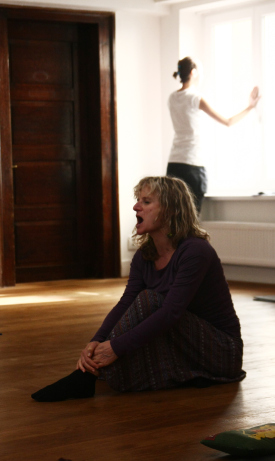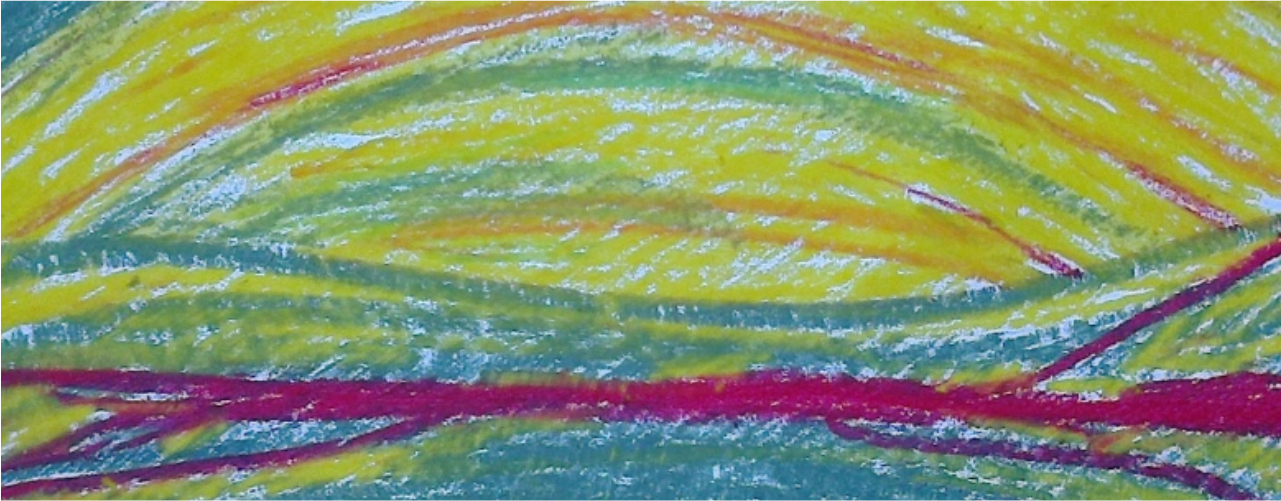Space for our Voice -Working with the Kinesthetic Sphere in Voice Movement Therapy
“Do not shrink. Do not puff up. Stand in your sacred ground” suggests the American shame and vulnerability researcher Brene Brown.

This statement often reminds me to honour my voice and presence in the world, especially when I feel unsure of myself.
In Voice Movement Therapy (VMT) we have a specific tool that enables us to create an embodied space which is potentially supportive, grounding and larger than our fears. We call this space the kinesthetic sphere. It is the multi-sensory field of our present experience where with the help of our voice, breath, movement and imagination we can discover and express our sensations, emotions, moods, memories and other perceptions. Our voice may shake, break or rise, our body may ache, soften or jump. Maintaining awareness of our sphere means including all of our experience with the help of the holding and grounding qualities of the sphere. The sphere is inclusive of all that we are sensing, feeling and thinking, and working with it leads to a greater self-awareness and self-acceptance. What we uncover in the sphere can translate into authentic self-expression.
The sphere always surrounds us, is flexible in size and changeable in content, depending on our day to day experience and how far we need its boundaries to reach. In his teachings on Somatic Descent Reggie Ray suggests that our body boundary is much more flexible than we think. It can expand with our awareness and energy. In VMT our imagination, movement and the acoustic resonance of our voice enable us to occupy and fully inhabit the space that surrounds us. The sphere is this space in which we communicate what matters to us with our voice, may it be a piece of information, an opinion, a formal speech, a confession, a poem or indeed a song.
As well as the spaciousness, the sphere can offer a holding quality. It has a boundary which we sense and can mark with our imagination and which clearly separates our inside world from the outside. After becoming aware of our space in its specific shape and size, we begin to settle into it. We find ourselves in the centre, back or front as we move around and begin to voice. We breathe from and into it. We feel our voice resonating in it as if echoed back to us, allowing us to hear ourselves aloud and listen to our voice. It can be nourishing too and employing our intention it can contain resources we need such as kindness, softness, strength, flexibility and nurture.
In developmental terms, the sphere emerges early on in relation to ourselves and the environment. The psychologist Donald Winnicott described the psychic space between mother and child as both psychological and physical. “It is in the space between inner and outer world, which is also the space between people–the transitional space–that intimate relationships and creativity occur.” Similar to the transitional space, the sphere provides the potential to reclaim our creative imagination within which our voice, self and Soul can grow. The relational space of the sphere mediates our interactions with each other.
In one of my VMT workshops, a participant who I will call Diane, imagined that her voice was locked behind a door and she wanted to free it up into ‘a wild open meadow’. I introduced the sphere as the personal space for our voice which sometimes gets intruded upon or doesn’t get fully developed because of relational challenges in childhood. Both abandonment or invasion of our personal space can have a huge impact on our sense of safety which can lead into difficulties around voice and confidence. Diane explored her sphere and tasted the possibility of owning her space where her voice can indeed open into ‘the wild meadow of her life’. She left encouraged and eager to continue this exploration.

For another client, a singer-songwriter, the sphere became a creative space. She was looking for inspiration for her song writing. She wanted to bring more ease and authenticity into her creative process and to find more flow in her song writing. Her sphere allowed her to stay with her experience long enough for a theme to emerge, evolving into spontaneous vocalisations, a seed for a new song. These vocal discoveries often led to an insight, integration of her understanding and subsequent transformation.
Fritz Perls notes that “Fear is excitement without the breath.”
In our spheres we connect with the space around us, consciously breathing in oxygen, nurturing and supporting ourselves and our voice. We also breathe out which can relax and release tension we may have.
I have been working with a poet whose wish is to perform her poems authentically, whilst also staying connected to her audience. She brought her poems into the sphere where they became alive and held by her breath. She felt that she often didn’t breathe fully enough due to stage fright and body tension. The experiential space of the sphere allowed her to begin to let go of some of her tension and to take in the air from her surroundings which felt freeing and expansive. It gave her a sense of confidence and security. She was able to stay grounded in her connection to her work without getting lost in the imagined expectations of the audience.
Coming back to Brené Brown’s quote and the quality of sacredness we invite into our space. The root of the word sacred means ‘dedicated to’ which brings us to the possibility of dedicating this space to our truth in a given moment, our authentic experience. Voice Movement Therapy with its movement and vocal practices, allows and guides us to not ‘shrink’, nor ‘puff up’, but to fluidly respond to our inner impulse to voice, speak, sing or indeed remain silent. Whatever the experience is, we feel it and own it.
by Sebastiana Black, VMTRSinger SongwriterVoice Movement Therapy Practitioner, VMTRIntegrative Arts Child and Adolescent Counsellor, Dip.MBACPVisit her website at www.yourexpressivevoice.co.uk
Blogpost editor Robert Black. April 2019.
Citations:
Brené Brown, 2010, The Gifts of Imperfection: Let Go of Who You Think You’re Supposed to Be and Embrace Who You Are, Hazelden Publishing
Paul Newham, 1997, Therapeutic Voicework: Principles and Practice for the Use of Singing as a Therapy, Jessica Kingsley Publishers
Reginald A. Ray, 2016, Somatic Descent: Experiencing the Ultimate Intelligence of the Body, Audio CD, Sounds True
Veronica Phillips, personal communication, 2018.
Winnicott, D., 1953, Transitional objects and transitional phenomena,
Int. J. Psychoanal., 34:89-97.

